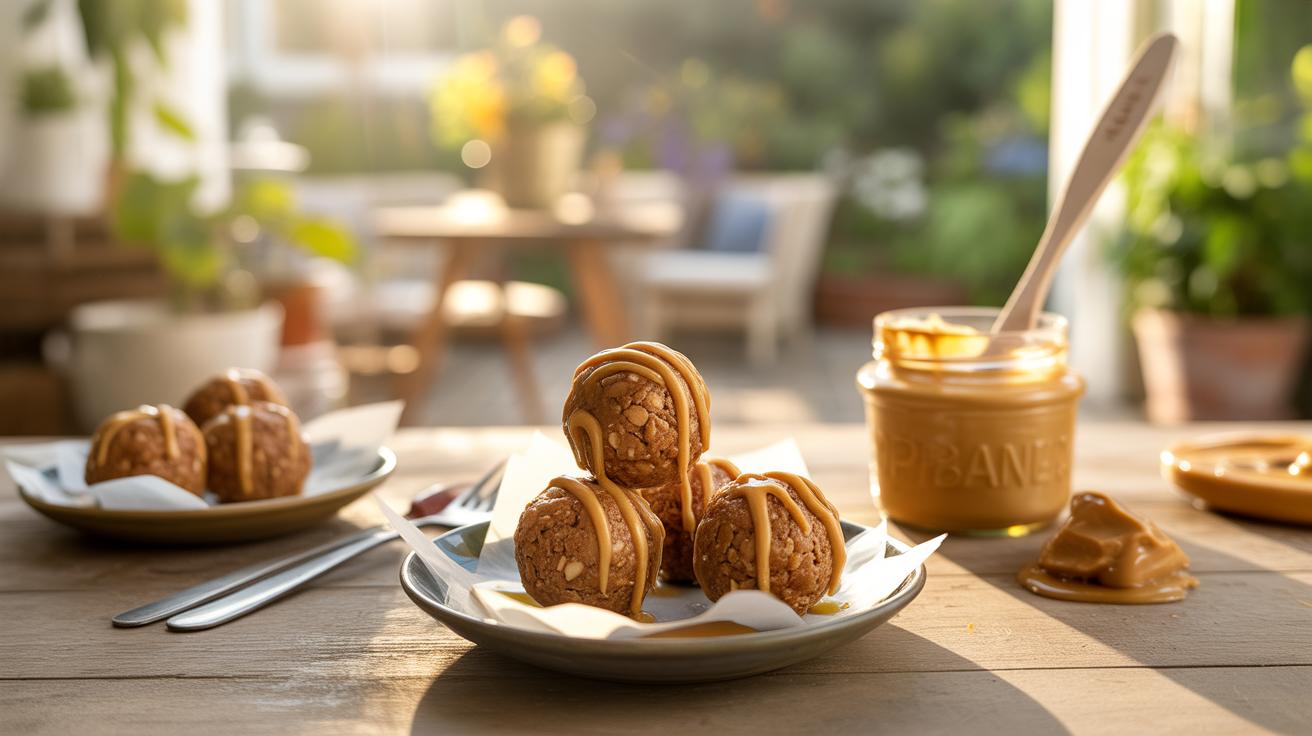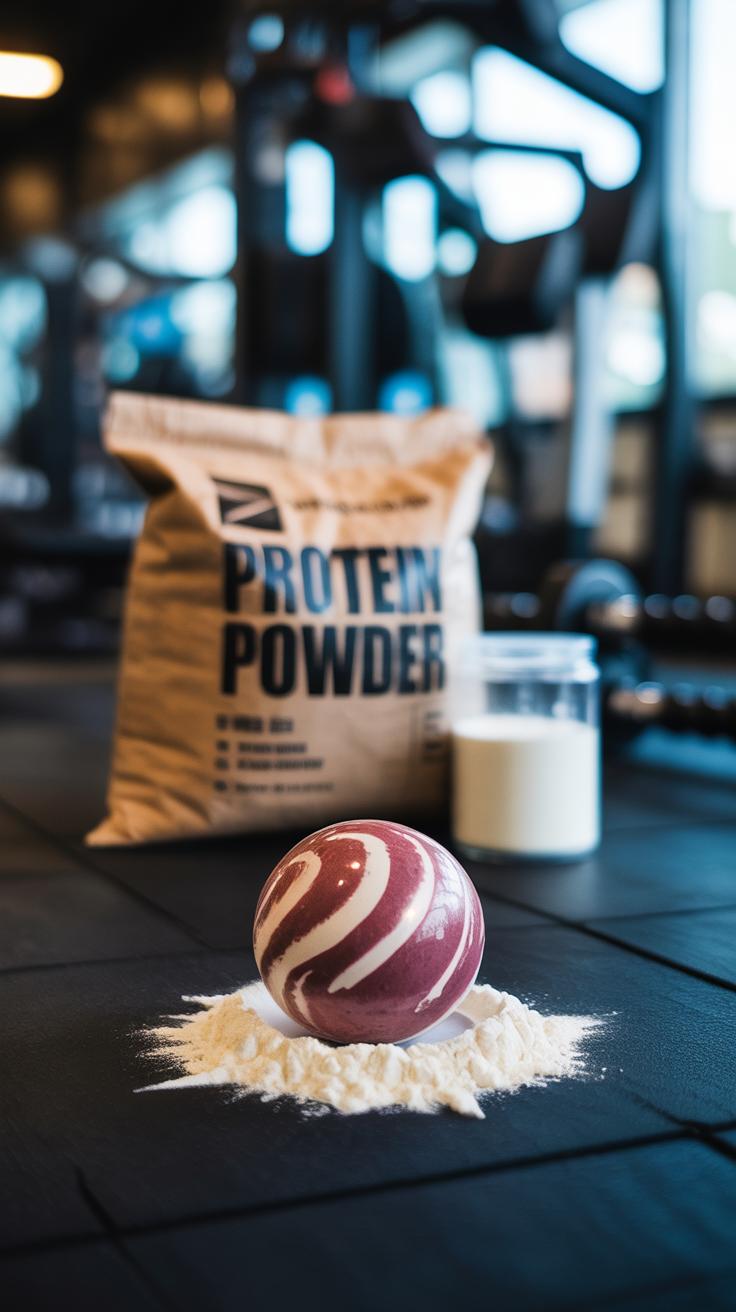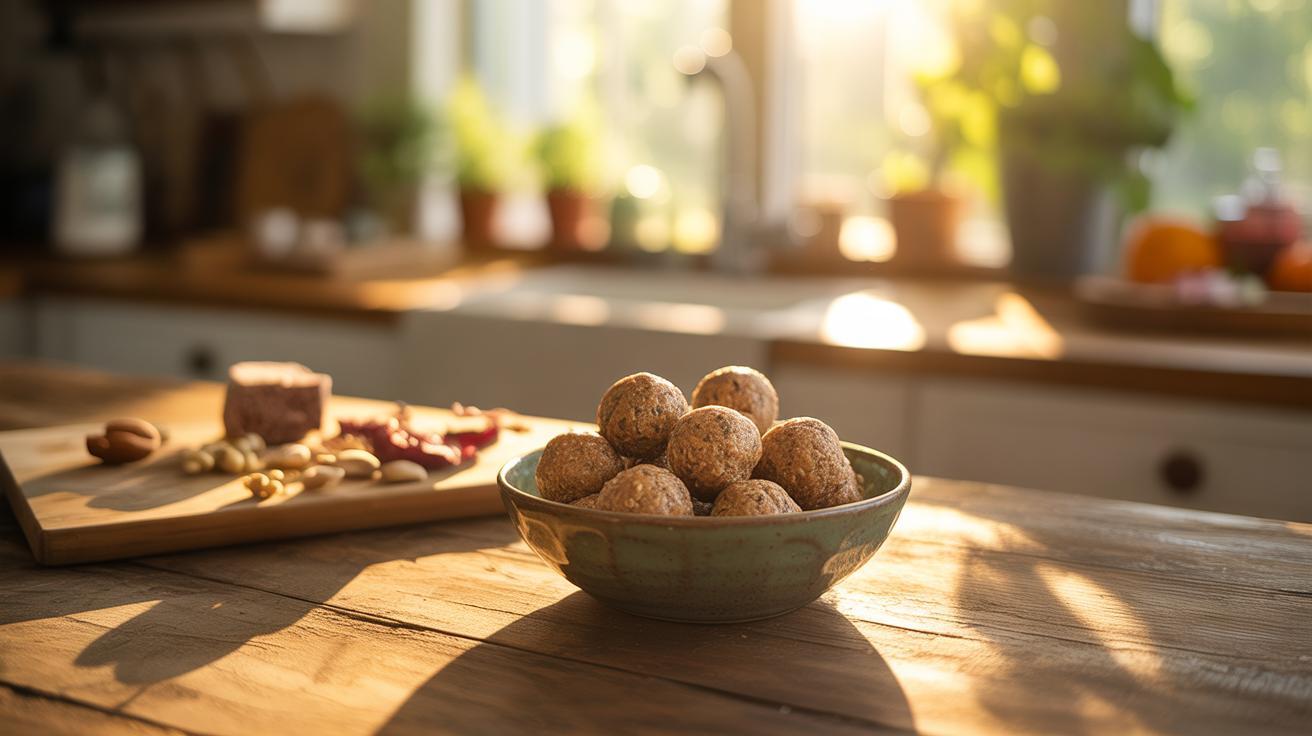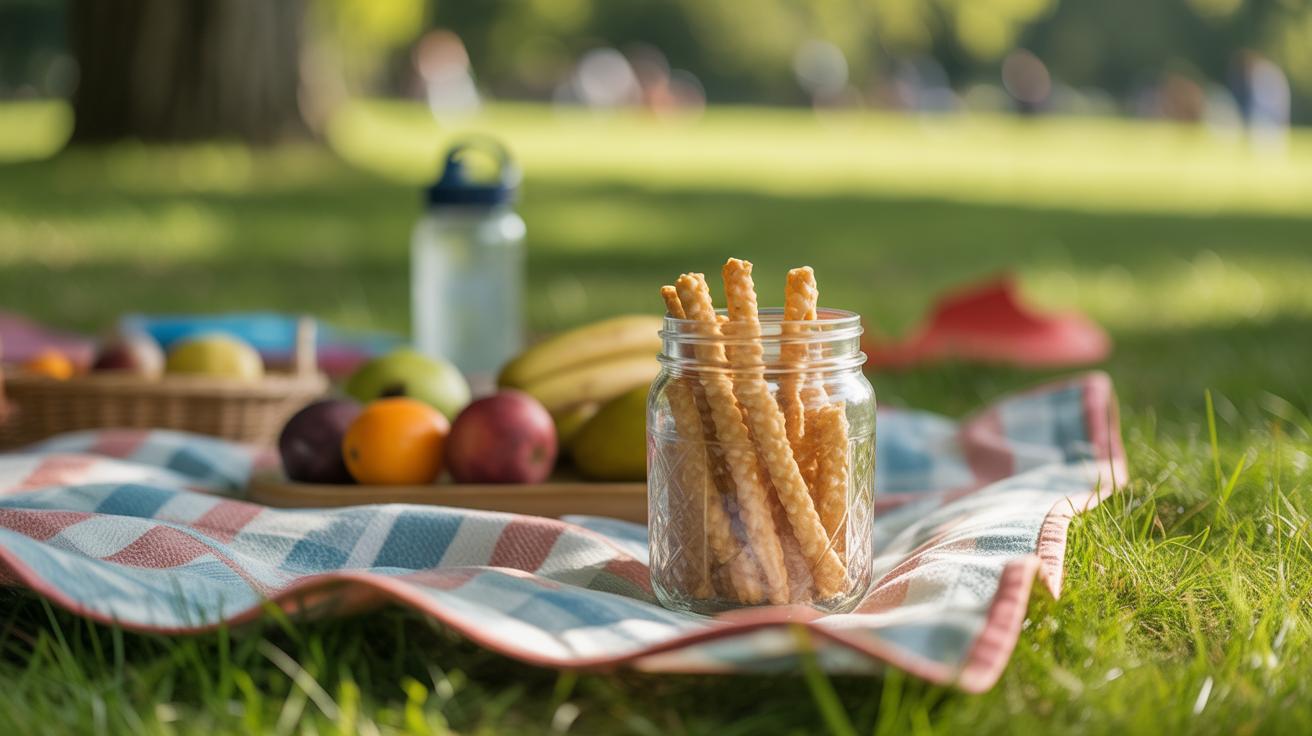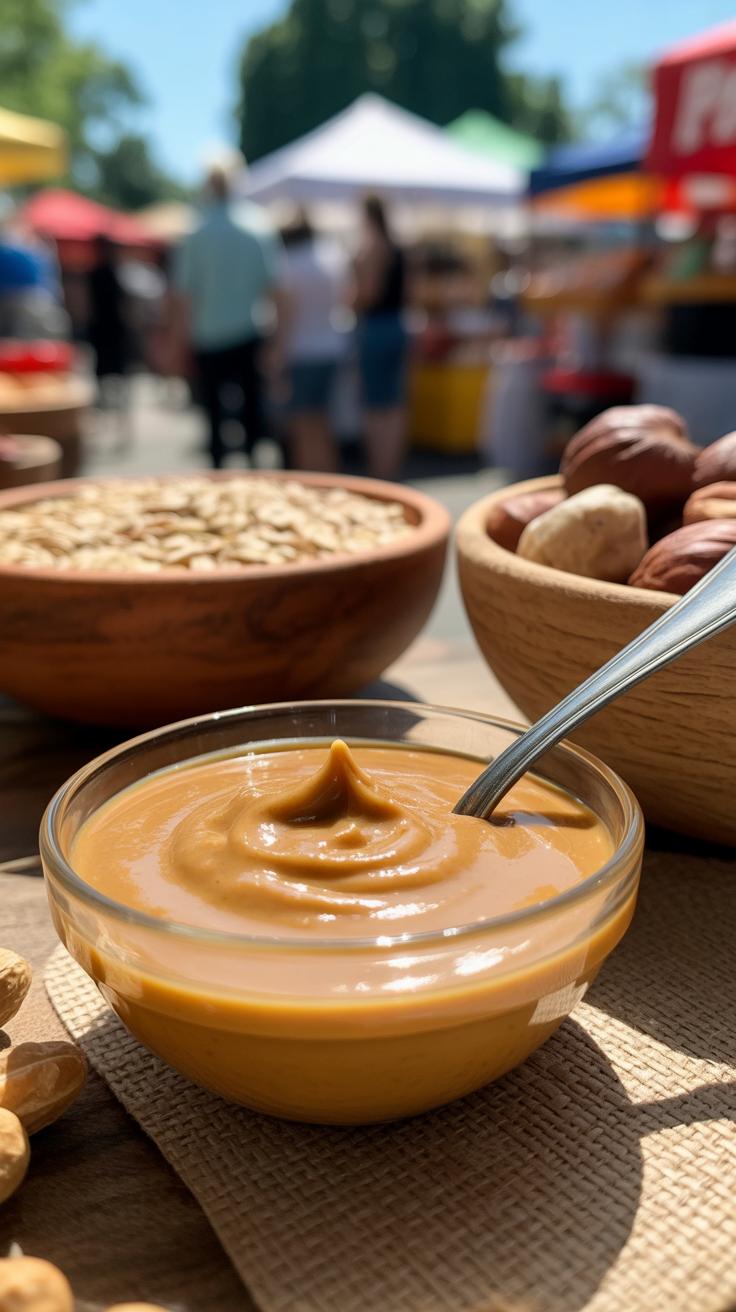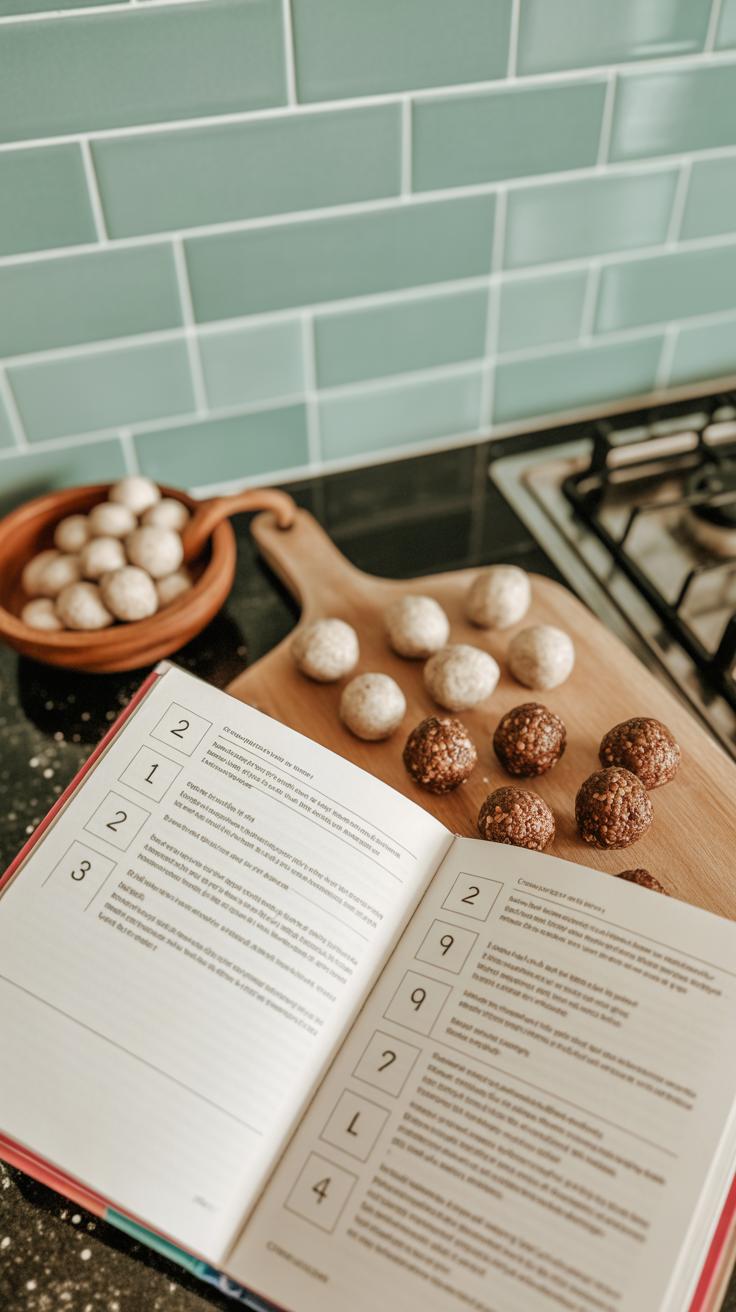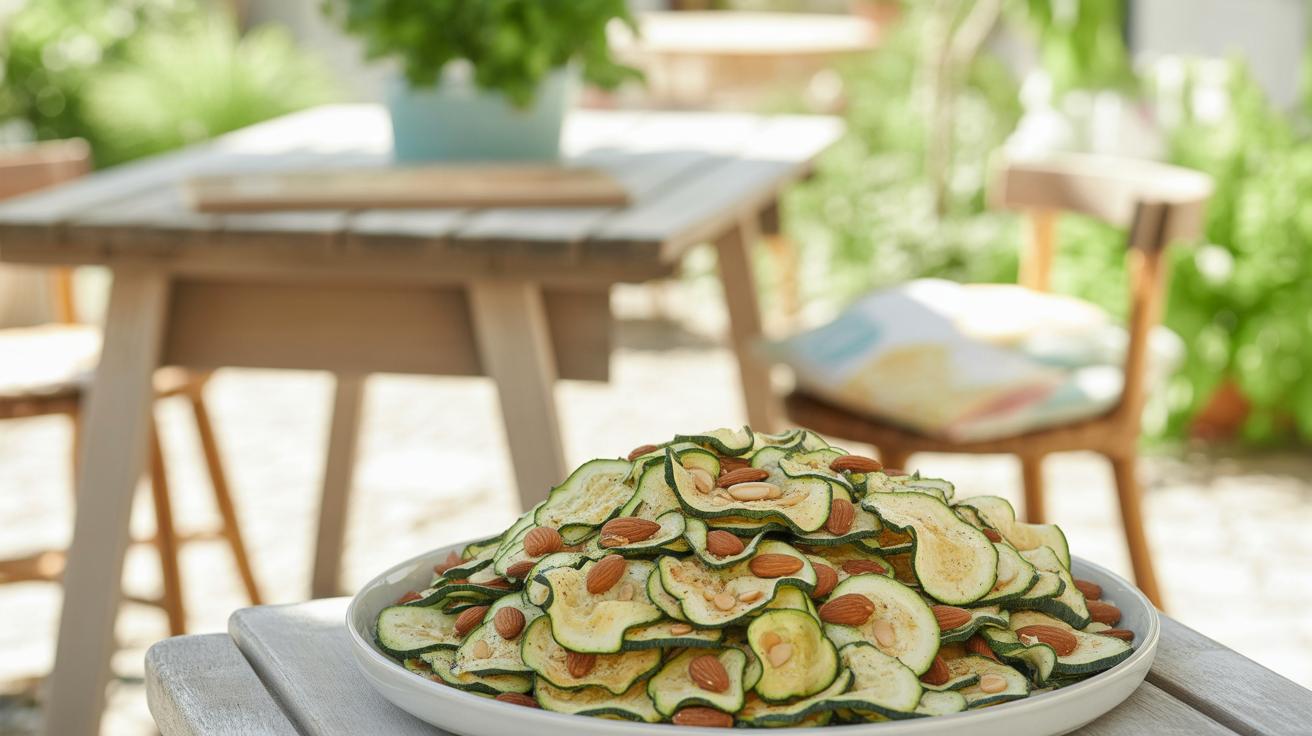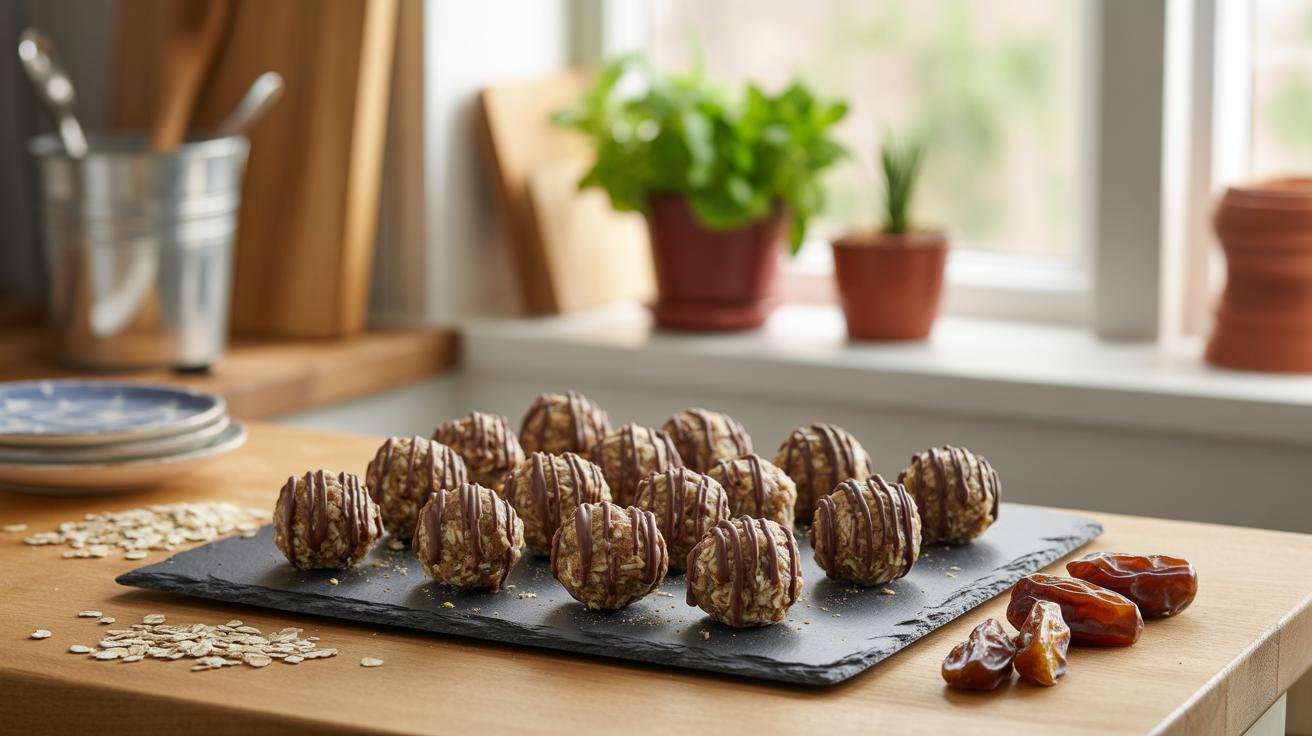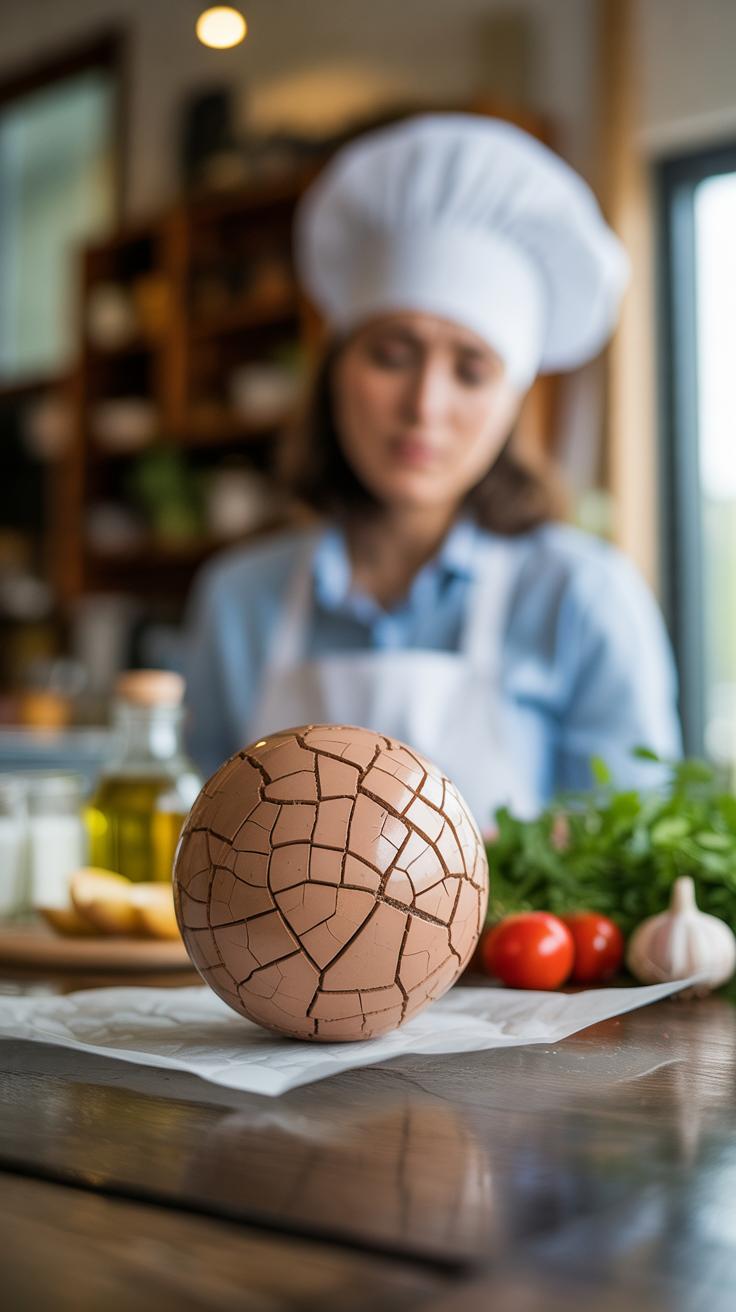Introduction
Protein Packed Peanut Butter Energy Balls Recipe offers an easy and tasty way to boost your energy and protein intake. These snacks combine the rich taste of peanut butter with other wholesome ingredients, making them a perfect choice for a quick energy boost. Whether you need a pre-workout snack or a midday pick-me-up, these energy balls deliver both nutrition and flavor.
You will learn about the ingredients, the preparation process, and how these energy balls can fit into a healthy diet. Discover simple tips to customize the recipe to your taste, and explore the benefits that peanut butter and protein provide to your body. Let’s explore how to make these energy balls a part of your daily routine.
The Role of Protein in Energy Balls
Protein plays a key role in what makes energy balls so satisfying and worthwhile as a snack. When you eat protein, your body breaks it down into amino acids, which support muscle repair, enzyme production, and even immune health. So, these little bites do more than just fill you up—they actually help sustain your energy over time.
Think about how a sugar rush from candy lasts a few minutes and then fades, leaving you tired. Protein slows down digestion and gives your body a steadier fuel supply. That’s why energy balls with good protein content often feel more sustaining than snacks focused mainly on carbs.
Not all protein behaves the same. Some sources are better for quick energy, others for long-term support. Peanut butter, for example, provides a moderate amount of protein along with healthy fats, which change how your body processes the snack. This blend helps avoid sudden spikes or drops in blood sugar, making the energy balls more stable as fuel.
When you’re making or choosing an energy ball recipe, consider how much protein it offers. Mixing peanut butter with other protein-rich ingredients—like oats, seeds, or protein powder—can raise the total protein content and impact how you feel after eating. It’s something to experiment with, depending on your goals and activity levels. How much protein you need with a snack might vary depending on whether you’re about to hit the gym or just need a mid-afternoon boost.
Why Protein is Essential for Your Body
Protein does more than just build muscles—it’s involved in repairing tissues, supporting immune functions, and even providing a slow-burning source of energy. After any physical activity, your body relies on protein to mend tiny tears in muscle fibers, which helps you recover and get stronger. But beyond muscles, protein influences hormones and enzymes that keep your body running smoothly.
You might wonder how much protein you really need at snack time. Even a small boost helps stave off hunger and keeps energy levels steady compared to sugary treats. So when you reach for an energy ball, you’re not just satisfying a craving—you’re fueling your body in a meaningful way. It’s like giving your system the parts it needs to stay resilient throughout the day.
How Peanut Butter Contributes to Protein Content
Peanut butter isn’t just tasty; it packs a decent amount of protein, usually around 7 to 8 grams per two-tablespoon serving. That’s noteworthy when you consider how compact these energy balls are. Using peanut butter as a binder means each bite carries not just flavor but a measurable protein boost.
In this recipe, peanut butter anchors the protein content, complementing other ingredients. It also mixes well with add-ins like oats or seeds, which add their own contributions. Sometimes I think people underestimate peanut butter’s role here—it’s not just a filler but a genuine source of nutrition that makes these energy balls more than just snacks, but small powerhouses of sustenance.
Essential Ingredients for Peanut Butter Energy Balls
The peanut butter is the star here, no doubt. But the other ingredients really pull the recipe together and give those energy balls their texture, taste, and extra nutrition. You’ll see oats and seeds often show up, plus a little sweetness and some flavor enhancers—each adding their own unique touch.
Choosing Healthy Add-ins Like Oats and Seeds
Oats are almost a must. They bind everything and add a chewy texture that makes the energy balls satisfying. Plus, oats bring fiber, which helps keep you feeling full longer. They also add unrefined carbs, which give just enough slow-burning energy without a crash later on.
Then there are seeds like chia or flax. These tiny additions pack omega-3 fatty acids, fiber, and antioxidants into every bite. Sometimes I wonder if all these little seeds really make a big difference, but they do boost nutritional value and also help with the texture, giving a subtle crunch or chewiness that you wouldn’t want to skip.
Sweeteners and Flavor Enhancers
Natural sweeteners like honey or maple syrup sweeten the mix gently. These are preferable over processed sugars, offering a touch of sweetness that also blends with peanut butter’s natural flavor. Honey, for instance, might add a floral note, while maple syrup can lend a richer taste.
Vanilla extract often makes an appearance, and it’s surprisingly effective at rounding out flavors. It’s not just a filler; it adds warmth and depth that you might miss if you leave it out. I’ve tried skipping it once, and the difference was subtle, but noticeable enough if you pay close attention.
StepbyStep Preparation Instructions
Start by gathering all your ingredients in one spot. This makes the process smoother, and honestly, it saves a bit of stress later on. Measure out your peanut butter, oats, honey, and any extras you decided to add. Having everything ready is the simple first step most people overlook.
When mixing, put the peanut butter and honey in a bowl first. Stir these together until they’re well blended. It might take some muscle, especially if your peanut butter is thick. Then add your oats and the rest—in my experience, adding dry ingredients slowly helps avoid clumps. You want everything evenly coated but not too sticky. If the mixture feels too dry, a splash of water or extra honey can fix that.
Once combined, don’t rush. Chill the mixture in the fridge for about 15 minutes if it’s still messy. It firms up the texture, making the next step easier—forming the balls.
Mixing Ingredients and Forming Balls
After chilling, scoop small portions—around a tablespoon works well per ball. Roll them between your palms with gentle pressure just until they hold together. Not too tight or they become dense, too loose and they fall apart. Sometimes you might find some balls stick more than others; a quick rinse or lightly damp hands often do the trick.
Shape doesn’t have to be perfect. Some of my favorites have been irregular, which honestly made them feel more homemade. If you like consistency, using a cookie scoop can help create uniform sizes. Placing them on parchment paper or a lined tray keeps them from sticking during the last chill.
Storage Tips to Keep Them Fresh
Storing your peanut butter energy balls well keeps their texture just right. A sealed container placed in the fridge usually keeps them fresh for up to a week. They firm up nicely but don’t become rock solid, which is a bonus if you want to grab one quickly.
If you need longer storage, popping them in the freezer works too. Just space them out on a tray until solid, then transfer to a freezer bag. When you want a snack, thaw them in the fridge or at room temperature. Frozen balls hold their flavor but can change texture a bit—sometimes a little softer once thawed.
Finding the storage method that fits your snack habits might take a try or two, but once you settle on what works for you, it’s hassle-free and always tasty.
Health Benefits of Peanut Butter Energy Balls
You might think peanut butter energy balls are just tasty treats, but they actually do quite a bit for your health when you eat them regularly.
Protein and Energy Boost
Peanut butter is known for its protein content, and that’s a big deal here. Protein helps keep your energy steady rather than spiking and crashing quickly. It also supports muscle repair, which is especially useful if you lead an active lifestyle or work out. I’ve noticed that having one of these balls before a workout helps me last longer without feeling drained halfway through. That slow-release energy keeps your body fueled without the sugar slump that other snacks can bring.
Additional Nutrients for Well-being
Beyond protein, these energy balls carry other nutrients you might overlook. Ingredients like oats, seeds, or dried fruit add fiber, which is good for digestion and feeling full. Plus, you get small amounts of vitamins and minerals—like magnesium, potassium, and vitamin E—that support heart and bone health. The mix of healthy fats from peanut butter also plays a role. So, even though it’s small, this snack packs a nutrient punch that’s quietly beneficial over time. Have you ever thought about how a little ball can hit multiple health points at once? It’s kind of surprising.
Customizing Your Energy Balls
Peanut butter energy balls are pretty flexible—you’re free to tweak them based on what you have or what you need. If you’re aiming to adjust for different dietary preferences or simply want to mix things up, small changes can make a big difference in taste and nutrition.
Adding Different Nuts and Seeds
Try swapping or mixing peanuts with other nuts like almonds or walnuts. Almonds add a subtle crunch and boost vitamin E, while walnuts bring omega-3 fatty acids. Sunflower seeds also make a nice inclusion, offering a mild nutty flavor and a good source of magnesium. These variations alter not just the texture but also the nutrient profile—more healthy fats, different vitamins, and minerals. I once replaced half the peanuts with chopped walnuts just because I ran out, and the earthier flavor really grew on me, though it might not be everyone’s cup of tea.
Incorporating Superfoods and Spices
Adding cacao nibs can give your energy balls a bitter chocolate twist, which surprisingly pairs well with peanut butter’s sweetness. Cinnamon offers warmth and may help regulate blood sugar—a neat bonus if you’re sensitive to sugar highs. Turmeric is a bit more unusual in energy balls but adds an anti-inflammatory kick; its flavor does change things, so you might want just a small pinch. Some people swear by ginger or even a dash of sea salt to highlight all the flavors. You could say it gets creative fast—do you want to keep it familiar or take a chance with bold spices?
When and How to Eat Peanut Butter Energy Balls
Peanut butter energy balls fit well into your day in more ways than you might expect. They’re handy little bites that can really come through when you need a boost, but the trick is knowing when and how to eat them.
Pre-Workout and On-the-Go Snacks
Think of these energy balls as small fuel tanks. A couple of bites about 30 minutes before you work out can help give your muscles the energy they need. It’s not just the protein; the combination of natural sugars and fats provides a fairly balanced energy release. They’re also perfect if you find yourself rushing between meetings or errands. No time for a proper meal? Grab a ball or two to keep hunger at bay without feeling heavy or sluggish.
You might wonder, though, if they’re right before intense exercise. Well, some people can find them a bit dense before intense cardio, so testing your own comfort level makes sense. For light workouts or quick bursts of energy, they work well.
Healthy Replacement for Unhealthy Snacks
Here’s a simple switch: replace chips, candy bars, or pastries with these peanut butter balls. They bring more nutrients to the table, like protein and healthy fats, which rarely show up in typical convenience snacks. Swapping out processed options can gradually reshape your snacking habits without feeling like deprivation.
Of course, it’s easy to get carried away with energy balls too. They taste good, after all. So, keeping portion control in mind helps maintain balance. Using them as an alternative—not an addition—to your usual snacks could make a real difference over time.
Common Mistakes to Avoid When Making Energy Balls
Using Too Much Sweetener or Binding Agents
One thing I’ve noticed is that adding too much sweetener, like honey or maple syrup, can make your peanut butter energy balls oddly sticky or even soggy. It might seem like a good idea to make them sweeter or hold together better, but overdoing it messes with the texture. Instead of firm, bite-sized balls, you might end up with a gooey mess that’s hard to shape and doesn’t hold its form once you’re done. Sometimes I’ve tried balancing wet ingredients like peanut butter and syrup, thinking it would blend well, but I found that less is more here. It’s a bit tricky because the exact amount depends on things like your peanut butter’s oiliness or the nuts you use. You want to add just enough binding agents to hold things together without drowning the mixture.
Not Storing Properly After Preparation
Once you’ve put in the effort to make peanut butter energy balls, proper storage really matters. Leaving them out for too long or packing them into an airtight container without refrigeration can cause them to lose freshness quickly—or worse, get soft and mushy. I remember once I left a batch on the counter overnight, hoping they’d be fine by morning, but they were almost too soft to eat. Storing them in the fridge usually keeps them firm and tasty, but you may want to bring a few to room temperature before snacking so they don’t feel too cold or hard. Freezing is an option too, but then you’ll want to thaw them carefully. So, where and how you keep your energy balls definitely affects their lifespan and texture more than many realize.
Frequently Asked Questions
Can You Make Energy Balls Without Peanut Butter?
Yes, you can definitely make energy balls without peanut butter. If peanut butter isn’t your favorite or if you have allergies, there are plenty of alternatives. Almond butter, cashew butter, sunflower seed butter, or even tahini can serve as great bases. These options vary in flavor and texture, so you might want to experiment a little. For example, almond butter tends to be a bit smoother and milder, while sunflower seed butter brings a slightly earthy taste. Some people even use mashed avocado or coconut butter, although those require a bit more tweaking since they don’t bind the ingredients quite the same way.
Choosing a nut or seed butter impacts not just flavor but also nutrition. Cashew butter might add a creamy richness but tends to be lower in protein than peanut butter. Trying different bases can turn your energy balls into new creations. So, don’t hesitate to swap and see what works best for you.
How Long Do Energy Balls Last?
Once you’ve made your energy balls, their shelf life depends mostly on the ingredients and storage. Typically, they last about 5 to 7 days when kept in an airtight container in the fridge. You might notice they dry out or get a bit harder after a few days, which can be a little annoying but still edible.
If you want them to last longer, freezing is a solid option. Place the balls on a baking sheet, freeze until solid, then transfer to a freezer bag or container. They’ll keep well for up to 3 months that way. When you want a snack, just thaw them for 10 to 15 minutes. Sometimes, freezing slightly changes the texture, making them firmer. That can be nice, depending on your preference—though, I’ve found some people like them softer, which is easier when freshly made.
So, think about how quickly you plan to eat them, and choose your storage method accordingly. Fresh or frozen, both work—it just depends on your timing and taste.
Conclusions
Protein Packed Peanut Butter Energy Balls are a nutritious and convenient snack option. They provide a balance of protein, healthy fats, and other nutrients that help keep you energized. You can easily make them at home with simple ingredients, saving money and avoiding added preservatives found in many store-bought snacks.
By including these energy balls in your diet, you support your body’s protein needs while enjoying a tasty treat. Experiment with different add-ins and flavors to keep your snacks interesting. Start making these energy balls today for a healthier, energized you.

